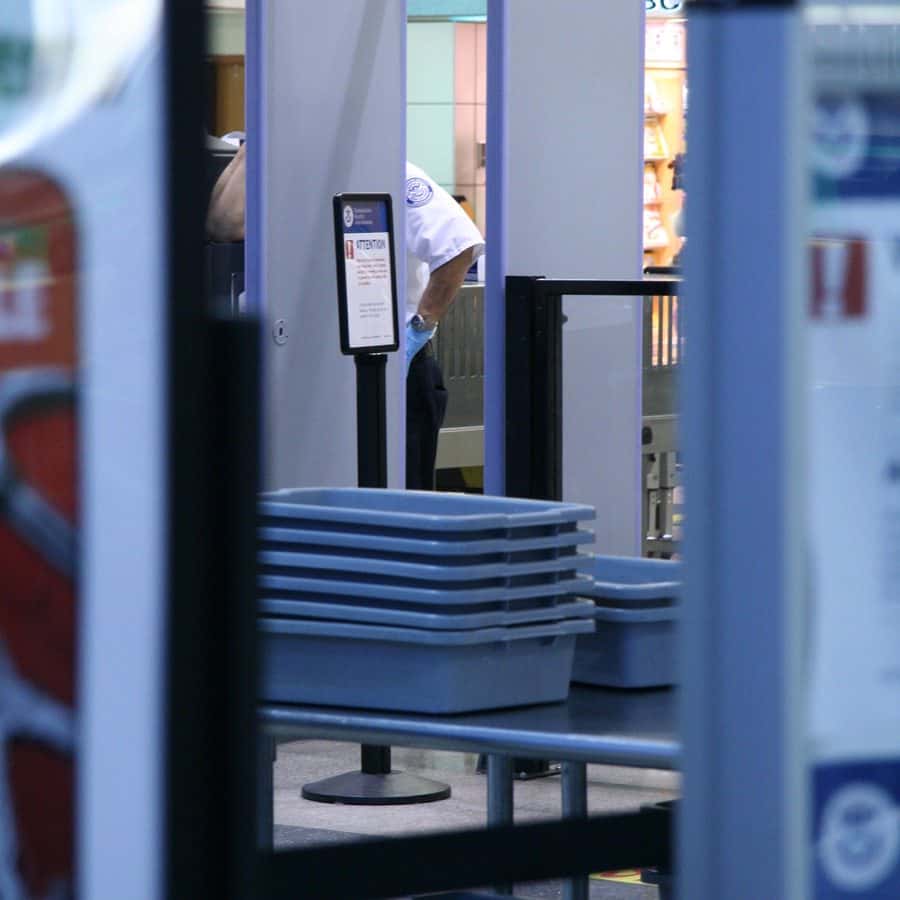
Traveling can expose you lots of germs. People often worry about airplane air, but in reality, it is well filtered. A little recognized source of contamination is lurking in the security line.
What’s Up with the Security Line?
The trays in which you place your keys, computer, cell phone, coat and other personal items are the most virus laden items in the airport, according to a new study (Ikonen et al, BMC Infectious Diseases, Aug. 29, 2018). Scientists swabbed down many items in the Helsinki Airport during the winter of 2016, including kiosk touch screens, toilets, elevator buttons, escalator handrails and the trays in the security line. They found no viruses on toilet bowls or flush buttons, but half of the security trays were contaminated with viruses, including those that cause the common cold and others that can cause influenza. On a busy day, each tray is touched by hundreds of passengers.
What Can You Do to Protect Yourself?
The investigators suggest self defense: wash your hands with soap and water or use an alcohol hand sanitizer before and after passing through the security line. Previous research has suggested some other precautions that can be helpful.
How to Reduce the Chance You Will Catch a Cold on Your Flight:
A study that involved observation and measurement of air on ten different flights suggests that air travel is not really as risky in terms of infection as many people think (Hertzberg et al, PNAS, March 19, 2018). There are some precautions that make sense, however.
Choose a Window Seat:
To reduce the chance you will catch a cold or the flu, select a window seat and don’t get up and move around during the flight. Of course, this strategy will work best if the person next to you is healthy. The risk of catching a transmissible infection is greatest for those sitting within two seats and two rows of an individual who is ill. Taking an aisle seat will expose you to a lot more people moving around, and thus to more individuals who might be sick.
Pros and Cons of Moving Around:
Staying seated the entire flight may be safe only for flights that last two hours or less.
Ron points out:
“Not getting up and moving around is bad advice, in that it increases the risk of deep vein thromboses, which can be much more dangerous than most respiratory infections. I know that personally, having had a pulmonary embolism following a long flight. Fortunately, my
result was only temporary debilitation and not death.”
Stay Home If You Are Sick:
The research included several flights during flu season, but only one person on all those airplanes was coughing. If it is possible to avoid traveling while you are ill, that is better for you and also for all the other folks you would otherwise encounter.
Wipe Tray Tables and Door Handles with Alcohol:
If you use your tray table, sanitize it with an alcohol wipe. Germs can hang out for days on surfaces like tray tables or lavatory door handles. Nonetheless, samples of the seat-belt buckles did not turn up frightening contamination.
Air travel can disrupt people’s usual health routines, including mealtimes and sleep patterns. Some people may become more susceptible to infection under that type of stress. These precautions might be even more important for them.

